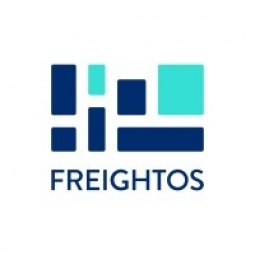How Sysco’s International Food Group (IFG) got instant access and easy control of freight rates, and improved carrier negotiations

公司规模
Large Corporate
地区
- America
国家
- United States
产品
- Freightos
实施规模
- Enterprise-wide Deployment
影响指标
- Cost Savings
- Productivity Improvements
技术
- 平台即服务 (PaaS) - 连接平台
适用行业
- 食品与饮料
适用功能
- 物流运输
- 销售与市场营销
用例
- 供应链可见性(SCV)
关于客户
Sysco’s International Food Group (IFG) is a division of Sysco, a Fortune 100 company with a net worth of $44 billion. Sysco IFG is responsible for shipping tens of thousands of tons of product daily, reaching millions of consumers, including healthcare institutions, educational facilities, and leading restaurant franchises. This involves coordinating thousands of products from over 90 countries. Sysco has emerged as America’s largest foodservice company, with a reputation for great products and a great supply chain.
挑战
Sysco IFG, a division of America's largest foodservice company, Sysco, coordinates thousands of products from over 90 countries, reaching millions of consumers daily. The company's goal is to reduce costs to customers, reduce delivery time for cargo, documents, and information, and increase logistics income. However, they faced challenges in making freight shipping rates available to sales and sourcing teams and ensuring those rates were used. The involvement of logistics and accounting teams in the sales process was resource-draining and slowed down the sales process, costing them sales.
解决方案
Sysco IFG adopted Freightos, a technology that allows sales reps to check door-to-door international freight rates online in seconds during meetings with suppliers or customers. This reduced the involvement of logistics and accounting teams in the sales process, as they now only check a fraction of sales, and the checking process takes much less time. Freightos also aids in better freight negotiations. Before meeting carriers, Sysco IFG can use Freightos to check negotiated rates from carriers, reducing preparation time and increasing confidence in the data. Freightos also provides access to market rates and trend visibility, which are critical when spot quoting.
运营影响
数量效益

Case Study missing?
Start adding your own!
Register with your work email and create a new case study profile for your business.
相关案例.

Case Study
The Kellogg Company
Kellogg keeps a close eye on its trade spend, analyzing large volumes of data and running complex simulations to predict which promotional activities will be the most effective. Kellogg needed to decrease the trade spend but its traditional relational database on premises could not keep up with the pace of demand.

Case Study
HEINEKEN Uses the Cloud to Reach 10.5 Million Consumers
For 2012 campaign, the Bond promotion, it planned to launch the campaign at the same time everywhere on the planet. That created unprecedented challenges for HEINEKEN—nowhere more so than in its technology operation. The primary digital content for the campaign was a 100-megabyte movie that had to play flawlessly for millions of viewers worldwide. After all, Bond never fails. No one was going to tolerate a technology failure that might bruise his brand.Previously, HEINEKEN had supported digital media at its outsourced datacenter. But that datacenter lacked the computing resources HEINEKEN needed, and building them—especially to support peak traffic that would total millions of simultaneous hits—would have been both time-consuming and expensive. Nor would it have provided the geographic reach that HEINEKEN needed to minimize latency worldwide.

Case Study
Energy Management System at Sugar Industry
The company wanted to use the information from the system to claim under the renewable energy certificate scheme. The benefit to the company under the renewable energy certificates is Rs 75 million a year. To enable the above, an end-to-end solution for load monitoring, consumption monitoring, online data monitoring, automatic meter data acquisition which can be exported to SAP and other applications is required.

Case Study
Coca Cola Swaziland Conco Case Study
Coco Cola Swaziland, South Africa would like to find a solution that would enable the following results: - Reduce energy consumption by 20% in one year. - Formulate a series of strategic initiatives that would enlist the commitment of corporate management and create employee awareness while helping meet departmental targets and investing in tools that assist with energy management. - Formulate a series of tactical initiatives that would optimize energy usage on the shop floor. These would include charging forklifts and running cold rooms only during off-peak periods, running the dust extractors only during working hours and basing lights and air-conditioning on someone’s presence. - Increase visibility into the factory and other processes. - Enable limited, non-intrusive control functions for certain processes.

Case Study
Temperature Monitoring for Restaurant Food Storage
When it came to implementing a solution, Mr. Nesbitt had an idea of what functionality that he wanted. Although not mandated by Health Canada, Mr. Nesbitt wanted to ensure quality control issues met the highest possible standards as part of his commitment to top-of-class food services. This wish list included an easy-to use temperature-monitoring system that could provide a visible display of the temperatures of all of his refrigerators and freezers, including historical information so that he could review the performance of his equipment. It also had to provide alert notification (but email alerts and SMS text message alerts) to alert key staff in the event that a cooling system was exceeding pre-set warning limits.

Case Study
Coca-Cola Refreshments, U.S.
Coca-Cola Refreshments owns and manages Coca-Cola branded refrigerators in retail establishments. Legacy systems were used to locate equipment information by logging onto multiple servers which took up to 8 hours to update information on 30-40 units. The company had no overall visibility into equipment status or maintenance history.






